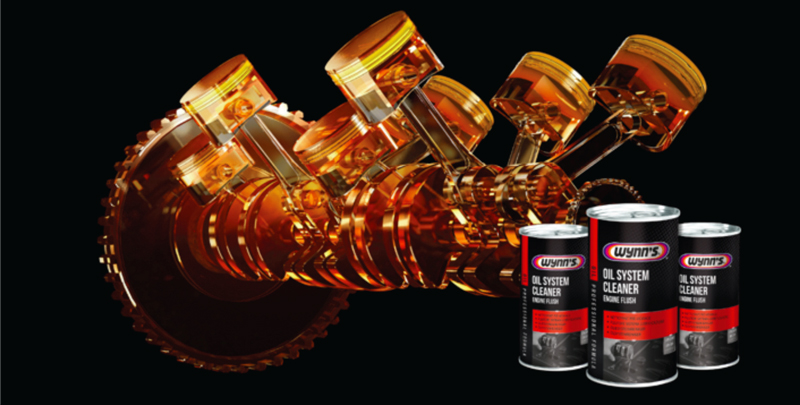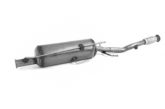
Wynn’s Oils gives its advice on different fuel types and how to improve engine performance with oils and additives.
Understanding the various types of fuel, the oil functions, and how lubrication additives work is essential for drivers to optimise their vehicle’s performance.
Petrol: Its fuel is derived from petroleum. It powers various vehicles and machinery globally, but on the other hand, it generates lots of pollution. It comes in different octane ratings denoted by the labels on pumps, affecting combustion and performance. While SUVs and sports cars benefit from higher octane fuel, most vehicles operate fine on regular gasoline.
Diesel: It’s also petroleum-based but refined differently. It powers industrial and off-road vehicles, offering better fuel efficiency than gasoline. Diesel engines, utilise compression to ignite the diesel fuel. The resulting combustion propels the engine’s piston, powering the machinery. This innovation facilitated the development of compact engines suitable for smaller vehicles.
Biofuels: This type of fuel is derived from biomass – animal and plant matter – is a sustainable alternative to traditional fossil fuels like diesel. Currently, two primary types of biofuels dominate the market – ethanol, and biodiesel – with emerging varieties like hydrocarbon or “drop-in” fuels on the horizon. Despite being under the umbrella of biofuels, each type undergoes distinct synthesis processes.
Ethanol: It’s an alcohol fuel, that primarily originates from plant starches and sugars such as corn or sugarcane. Ongoing research explores deriving ethanol from cellulose and hemicellulose, the fibrous, non-edible parts of plants. Typically produced through fermentation, microorganisms break down plant sugars to yield ethanol. Ethanol finds extensive use as a blend with gasoline, significantly reducing emissions, with over 98 per cent of US gas containing it.
Biodiesel: It’s another biofuel variant, is a non-toxic, biodegradable fuel crafted by combining alcohol (often ethanol) with vegetable oils or animal fats. New and used substances, including old restaurant grease, can be converted into biodiesel. Usually blended with standard diesel, the common blend ratio is B20 – 20 per cent biodiesel and 80 per cent petroleum diesel.
Hydrocarbon fuels: While traditionally derived from petroleum, it can also be produced from biomass using diverse methods. These fuels resemble petroleum fuels, enabling seamless interchangeability without requiring new engines or machinery. Referred to as drop-in fuels due to their compatibility with existing infrastructure, they offer a promising pathway toward sustainable energy solutions.
Car oil function
Engine oil’s primary function is to lubricate the engine and extract heat from the components to reduce wear. The oil absorbs contamination such as by-products of combustion, unburnt fuel, and moisture. In absorbing these elements, they are held in suspension until removed from the engine at an oil change.
Lubrication additives
Advances in technology and different types of fuel, as we saw, led to changes in engine oils. Driving styles, extended drain intervals, and smaller capacity sumps all contribute to the build-up of contamination. Over time and use the oil becomes acidic and the additives in the oil deplete. The oil can no longer absorb the elements, and this will cause the oil to thicken, reducing flow to moving parts, inability to effectively extract heat, and eventually causing wear to the engine.
Tribology is the science and technology of interacting surfaces in motion. In an engine, we see three conditions:
Dry friction is where there is little lubrication, and the surfaces can touch (on start-up)
Boundary lubrication is the slight separation of components by the oil but the rough peaks still touch (normally present at low speeds and during the warm-up period).
Hydrodynamic lubrication occurs when there is a complete separation of the rotating components, and they are fully protected by a film of oil (viscosity and velocity of the oil and the engine dependent).
Cleaning the crankcase during a service will remove deposits, tar, and lacquer from the oil system, allowing the new oil to stick to the internal moving parts and provide adequate protection to the engine. Cleaning the material surfaces of the engine will allow the new oil to provide a full lubricating film. Removing deposits will allow the new oil not to be compromised by the remaining oil and provide better protection during the service period.
Adding oil system treatments such as Wynn’s hydraulic valve lifter concentrate or Wynn’s super charge, Wynn’s oil system cleaner will assist the engine oil and aim to offer greater protection to the engine to improve its performance. These solutions are recommended for all petrol and diesel engines of vehicles and stationary equipment with high oil consumption, low oil pressure, and low compression.









